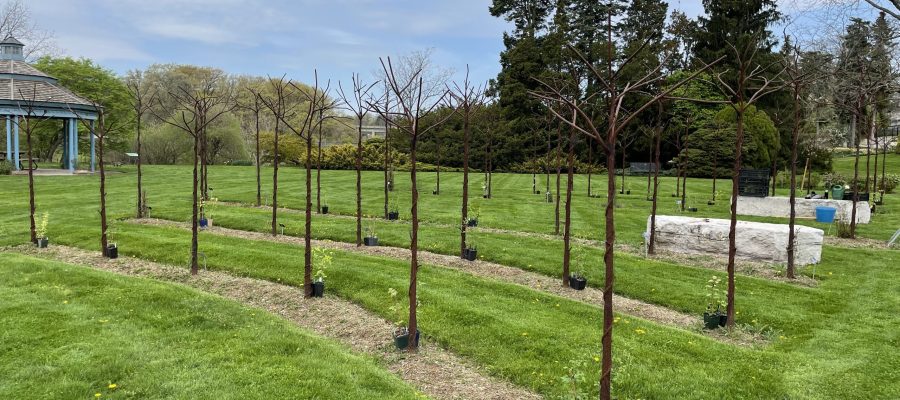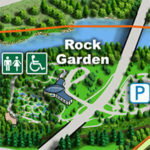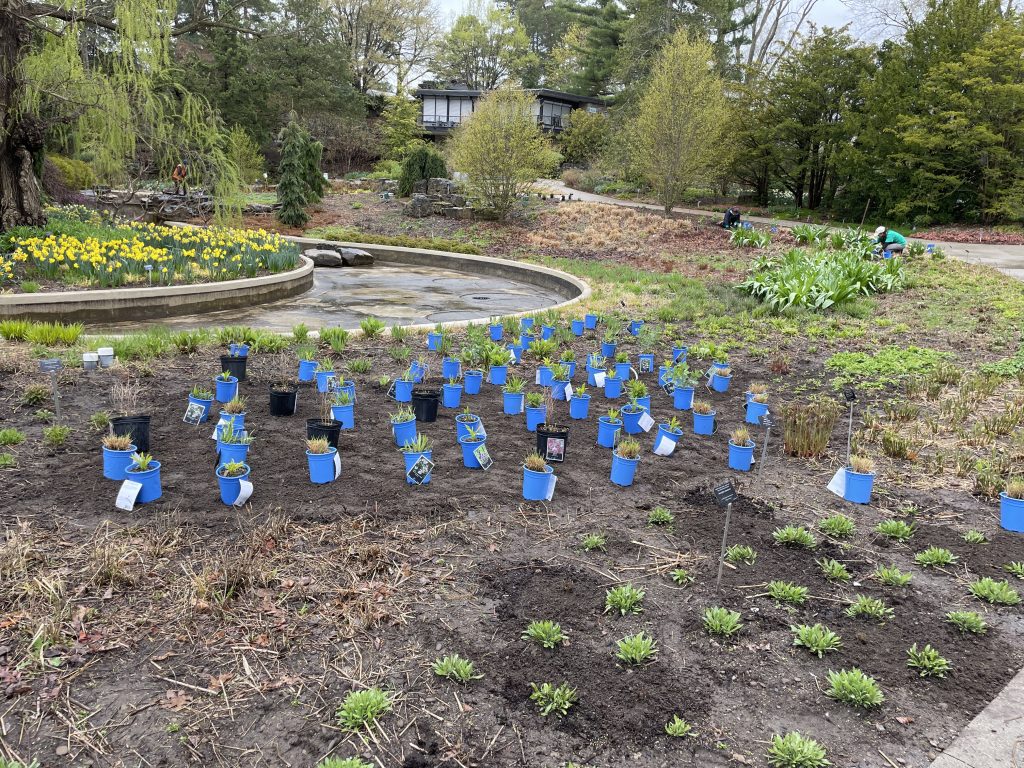| Membership | Price (+HST) |
|---|---|
| Single | $85/year |
| Single Plus | $120/year |
| Family | $130/year |
| Family Plus | $175/year |
| Contributing | $300/year |
| Supporting | $600/year |
| Sustaining | $1,000/year |
| Benefactor's Circle | $2,500/year |
| Director's Circle | $5,000/year |
| President's Circle | $10,000/year |
2023 Botanical Year in Review: How Did Our Garden Grow?
By: Jon L. Peter, Curator & Plant Records Manager, Royal Botanical Gardens
RBG’s cultivated gardens now have a total of 9,500 living accessions and over 234,000 individual plants growing in our living collections and gardens. Curating, sourcing, ordering, collecting, designing, and documenting these new accessions while still preserving the important and rare taxa (unique types) already existing in the gardens is fundamental to what we do as a public garden institution.
2023 had some obstacles that resulted in the fewest plants (5453 individual plants) being planted in recent history, however those plants did make significant contributions to the diversity (227 taxa = unique types) within the gardens.
During 2023, only 2 trees were planted and 130 shrubs/vines representing 41 taxa (unique types) were planted in the collections/gardens. Significant plantings included 56 plants representing 30 taxa of Clematis for inclusion in the Clematis Collection in Laking Garden.

There were unique woody taxa acquired of wild collected provenance in the form of seeds, which were not planted in the gardens but have been included in the living collections while we wait for germination, further growth, and subsequent planting into the collection.
The first wild collected taxa was from a multi-institutional collaboration between the Arnold Arboretum of Harvard University, University of Guelph Arboretum, University of Toronto, and Royal Botanical Gardens, with each institution represented by one collection team member during late September.
This collecting expedition was spearheaded by the Arnold Arboretum, who was interested in a species originally described by their first director, Charles Sprague Sargent in 1908. Crataegus perjucunda, a rare species of hawthorn, was originally collected by D.W. Beadle in London, Ontario in 1903, described by Sargent in 1908 as a unique species and documented again in 1977 by James Phipps of The University of Western Ontario.
In preparation for trying to find this species growing in the wild again, the collecting team assessed the documented locations of the previous collections from herbarium vouchers, one of which is held in the RBG Herbarium. There were seven previously documented locations of this species, all within or outside of London, Ontario, Canada. One of the locations looked promising, as it hadn’t appeared to be affected by urban sprawl.

Armed with herbarium presses and pole pruners, the collecting team explored the Westminister Ponds Conservation Area in the heart of London. This area contains a unique ecology of kettle ponds left behind by retreating glaciers 13,000 years ago and forests of red maple (Acer rubrum), oaks (Quercus rubra & Quercus alba), and beech (Fagus grandifolia). Along the trails we encountered many different species of Crataegus, and two trees that matched the description of Crataegus perjucunda (known for shorter/finer thorns and wider leaves). After consulting identification keys, debating the details of its morphology, and measuring of thorns/leaves, we believed this was the species we were looking for.
We collected seed, herbarium vouchers, and DNA samples, as well as documented all the specific details about the trees, the environment in which they grew, and gathered GPS coordinates. The seed and herbarium vouchers were shared between the Arnold Arboretum and RBG and an extra set of herbarium vouchers was shared with the Royal Ontario Museum for safe keeping.
This species could take upwards of 2-3 years of cold stratification before the seeds will germinate, so time will only tell if these new accessions will make it into the collections or not.
The majority of the plants that were planted in 2023 were spring flowering bulbs that were perennialized at Laking Garden and Rock Garden. A total of 3365 bulbs were planted representing 27 unique types, some of which have never previously been grown at RBG as well as some classic like Narcissus ‘February Gold’. In the coming spring, look out for the new to RBG types like Narcissus ‘Zinzi’, Narcissus ‘Electrus’, and Iris reticulata ‘Painted Lady’.
The remainder of the plantings were herbaceous perennials. There were 1956 individuals of 157 taxa planted, with the majority being planted within Rock Garden and Laking Garden. Many of these herbaceous perennials are new cultivars, which were donated to RBG by the growers who introduced them to the horticulture industry. I am particularly excited about perennials like Luzula ‘Lucius’, Spigelia marilandica ‘Ragin Cajun’, Panicum virgatum ‘Niagara Falls’ and a double-flowered Joe Pye weed called Eupatorium fistulosum ‘JoJo’.
Also of note is the planting of over 150 individuals of Phlox paniculata ‘Jeana’, which is recognized as the Perennial Plant Association’s Perennial Plant of the Year for 2024. This cultivar was discovered by Jeana Prewitt along the Harpeth River near Nashville, Tennessee and is valued for its resilience to powdery mildew. It features smaller flowers than other garden phlox but this feature has not deterred butterflies that feed on its rich nectar. In a Phlox trial at Mt. Cuba Center, Phlox paniculata ‘Jeana’ was top ranked in both horticultural and ecological evaluations.
Although several factors contributed to the lower number of plantings in 2023, it is still important for RBG to continue to source important genetics, trial new taxa, and continue to replenish beauty throughout our collections and gardens.
More from the RBG Blog
Check out RBG’s blog for announcements, articles, and more from Canada’s largest botanical garden.
Want to be sure you hear first? Sign up for our weekly e-newsletter to hear about upcoming events, weekend activities, articles, and more!















